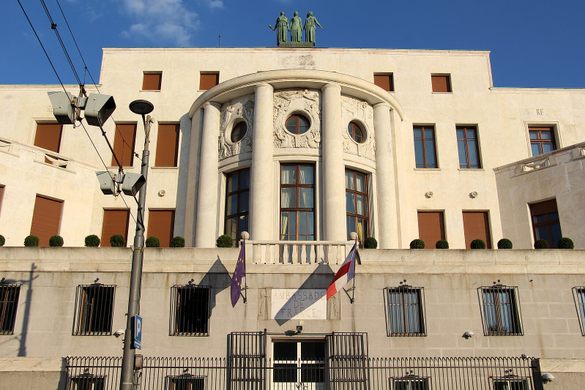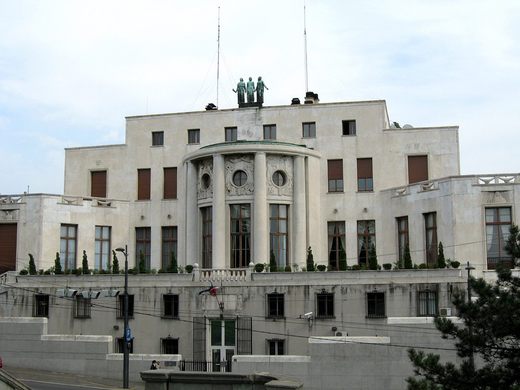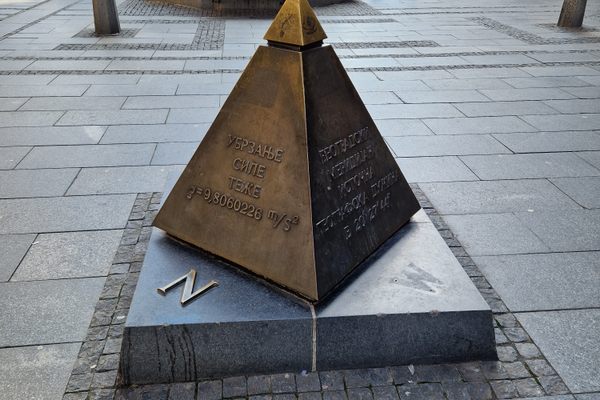Embassy of France in Belgrade
Arguably Belgrade's only example of pure Art Deco architecture.
Art Deco in Belgrade has had many contributions in the form of panels on apartment buildings and as elements in Yugoslav experimental architecture. Much has been contributed by Russian and Ukrainian emigre architects in the formation of what can be considered a Serbian Art Deco scene. Out of all that can be seen in the Serbian capital, the best example of Art Deco is arguably the Embassy of France, which is one of the only examples of pure Art Deco style in the city.
The Embassy of France in Belgrade is an architectural marvel constructed between 1928 and 1933 in the Art Deco style. It was designed by renowned French architect Roger-Henri Exper with the assistance of Serbian architect Josif Najman. The building, located between Gračanička, Pariska, and Knez Sima Marković streets, was designed to house the official spaces, military attaché offices, and the French ambassador’s residence. The sloping terrain at first presented a challenge, which was overcome by creating a massive base for the building and incorporating stepped structures in the middle and highest zones. The embassy’s facade was crafted from white Venčac marble and features intricate carvings and reliefs, including representations of Gallic chieftain Vercengetorix, Joan of Arc, Louis XIV, and symbols of French culture. This is why it is absolutely stunning and will catch your eye when walking alongside Pariska Street, a street that appropriately translates to “Paris Street”.
If given the opportunity to enter the embassy, visitors are greeted by a grand reception area on the first floor. The square audience hall bears a resemblance to the Hall of Mirrors in Versailles and leads to a round salon and a small marble garden. The reception rooms are adorned with emblems depicting four French rivers, shallow reliefs celebrating French wealth and culture, as well as a dove of peace symbolizing the Republic’s core value of peace. Notably, a large carpet created in the famous “Goblen” workshop in 1944 is among the valuable art objects housed in the embassy.
The pinnacle of Art Deco elegance is reached in the embassy’s round salon, accessed through a colonnade of towering marble columns. The salon was created to have natural light streaming through high, narrow glass doors, creating an illusion of stepping straight into the nearby Kalemegdan Fortress. The walls of the round salon display shallow reliefs symbolizing French wealth and culture, while the large fireplace features carved zodiac signs. Original chandeliers and crystal lamps still grace the reception area, maintaining the timeless charm of 1920s elegance. With fine Chevrolet leather upholstery and Sèvres porcelain in the large dining room to the Frank Lloyd Wright-style chairs and Art Deco coffee tables in the ambassador’s office, there is lots to see in this space if you ever get a chance to go inside. The second floor and attic, housing the ambassador’s apartment and auxiliary staff quarters, remain unseen but undoubtedly complement the elegance and grandeur of the entire building.
Finally, another aspect of the embassy are its gardens gardens. The small marble garden, with its carved reliefs, creates an idealized Art Deco landscape, while the large garden provides a lush oasis with a recently installed swimming pool offering breathtaking views of the Cathedral and the Patriarchate. The gardens host an annual open-air reception on July 14th, celebrating French Republic Day. In celebration of shared Serbian-French history, the gardens have a monument commemorating Louis Bartu, the French diplomat who tragically passed away alongside King Alexander I Karađorđević in 1934. This is symbolic of the ties between the two countries.
The Embassy of France in Belgrade is a timelessly elegant example of the Art Deco style and serves as a reminder of the intricate historical ties between France and Serbia that were especially felt decades ago. These are two countries that have historically shared deep allegiance and cultural respect for one another. After all, in December 1935 on the inauguration night of the building, the subsequent party consisted of 800 guests, including Milan Stojadinović, and all high-ranked government officials led by Prince Paul of Yugoslavia and Princess Olga of Greece and Denmark, proving the country’s esteem towards France.

















Follow us on Twitter to get the latest on the world's hidden wonders.
Like us on Facebook to get the latest on the world's hidden wonders.
Follow us on Twitter Like us on Facebook